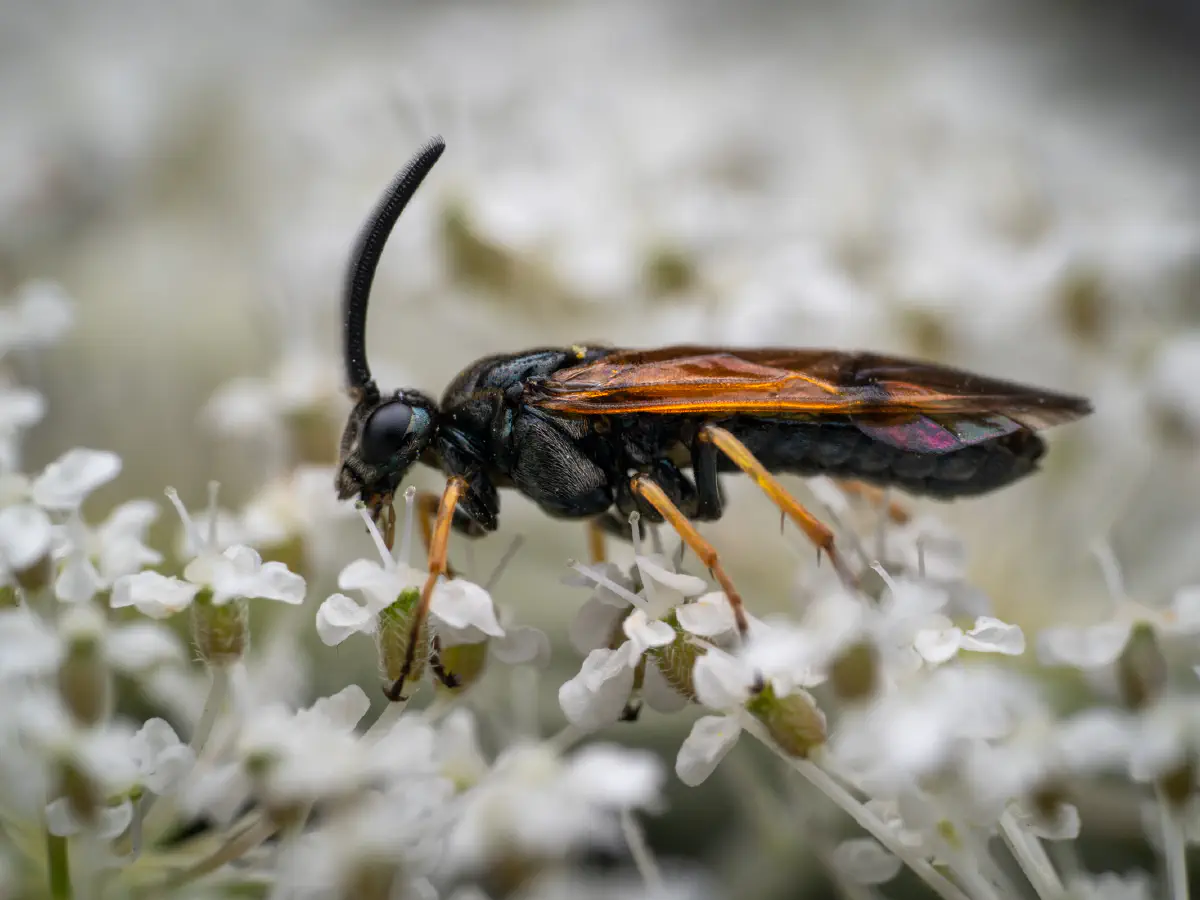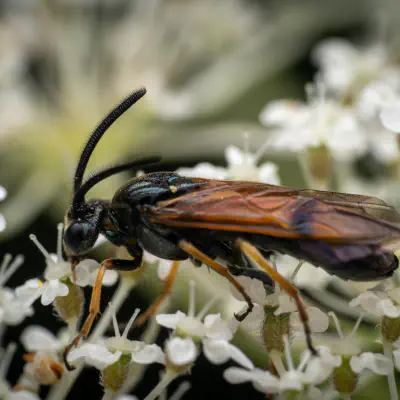These sawflies are present in most of Europe, in the Caucasus, in Asia Minor and in Japan.
Bramble Sawfly (lat. Arge cyanocrocea)





This is not intended to be a dry lexicon. Personal stories and sensitive articles form the framework for our pictures: „The jumper and the algorithm“
A spider becomes a content star



